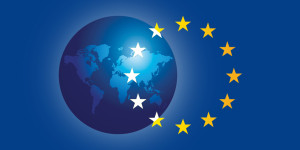On 23 September, the European Commission presented the first comprehensive analysis of the state of the ‘single market’ for research, or the European Research Area (ERA). The report provides a factual basis for assessing progress in target areas like open and fair recruitment of researchers or better circulation of scientific knowledge. The analysis shows that some progress has been made, but that even the best performing research institutions still have issues to address ahead of the 2014 deadline for ERA, as set by EU leaders. There is also a significant gap between the best and the worst performers. (MEMO/13/807). The European Commissioner for Research, Innovation and Science Máire Geoghegan-Quinn said: “This report shows that there is still a lot of work to do. Investment in Research and Development (R&D) is vital, but we need fully functional research and innovation systems to use that money best. We now need all EU Member States and all those involved in research and research funding to make a major push for ERA.”
Although the report underlines that progress has been achieved in all target areas, it also highlights a number of areas of continued concern, including:
- Public investment in R&D as a percentage of overall government spending was declining among some Member States;
- National research programmes still operated according to different rules, for example on reporting, which made transnational research co-operation difficult;
- The development and implementation of infrastructures, such as very intense lasers or extremely large telescopes, was hampered by financial, management and political barriers, Moreover, often national rules or high entry costs prevented researchers from other Member States from accessing them;
- Open, transparent and merit-based recruitment practices were still not broadly implemented for all research positions. In fact, more than half of vacancies were not yet advertised at a European level via the EURAXESS jobs portal. This only inhibited researcher mobility and may actually mean that the best person was not always appointed;
- Gender inequality meant that women researchers’ talent was still being wasted, and that this was the area of ERA where progress had been weakest;
- Relatively few researchers in Europe were employed in industry, and these researchers were not sufficiently prepared for the labour market.
The ERA is about enabling researchers, research institutions and businesses to better move, compete and co-operate across borders. This would strengthen Member States’ research systems, increase their competitiveness and allow them to work together more effectively to tackle major challenges.
EU leaders have repeatedly stressed the importance of completing the ERA, setting a deadline of 2014 in European Council conclusions of February 2011 and March 2012. The report comes one year after the adoption of the Communication “A Reinforced European Research Area Partnership for Excellence and Growth“, which identified actions Member States should take to achieve ERA. It provides a factual baseline for an in-depth assessment of ERA that will be conducted in 2014. The Commission proposals to achieve ERA focus on five key priorities where progress needs to be made:
- increased effectiveness of national research systems;
- improved trans-national cooperation and competition including establishing and effectively operating key research infrastructures;
- a more open labour market for researchers;
- gender equality and mainstreaming in organisations carrying out and selecting research projects; and
- optimal circulation and transfer of scientific knowledge, including via digital means.
The information in the ERA Progress Report was gathered from several sources, notably information included in the National Reform Programmes 2013, and a list of measures identified by the Institute for Prospective and Technological Studies of the Joint Research Centre. The Commission also conducted a survey of research funding and research performing organisations in all Member States and countries associated to the EU research programme, and this information was complemented by the MORE 2 study and Researchers Report 2013 published separately on the EURAXESS portal. The list of measures was completed in most cases by national authorities upon the request of the Commission.

